With cars flying through the air, drifting between the trees or slugging it out for tenths of a second on alpine mountain passes, the World Rally Championship always produces a show.
But sometimes that’s taken to the very next level.
Stadiums are usually reserved for other sporting events, like soccer, baseball, rugby or massive competitions like the Olympic Games.
But sometimes, just sometimes, there’s space for the world’s best rally drivers too.
Next week’s Acropolis Rally Greece brings the WRC to the stunning Olympic Stadium in Athens, but not for the first time.
Here are some of the memorable times the WRC took over a selection of the world’s most famous stadiums and turned them into rally stages.
Olympic Stadium, Greece
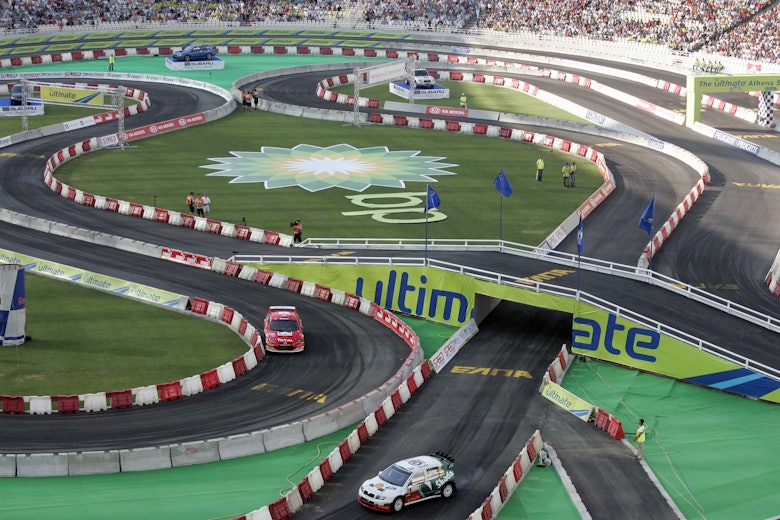
Let’s start with the hook of the feature. Back in 2005, a year after Greece hosted the Olympics for the second time, the Acropolis Rally organizer wanted to make use of the stunning new stadium that had been built.
And so a tight and twisty asphalt stage, including a crossover jump and tunnel, was created in the 70,000-seat stadium to raise the curtain on the 2005 event.
As he so often did that year, Sébastien Loeb set the pace, albeit by just one tenth over privateer driver Mark Higgins. Peugeot’s Markko Märtin was a further 0.8s back.
In 2006 the stage was held at both the beginning and the end of the rally with service held at the stadium too.
Loeb was an impressive two seconds faster than Marcus Grönholm on SS1 but Grönholm returned the favor on the final stage – beating Dani Sordo by the same margin and Loeb by 2.5s to win the rally by over two minutes.
This year, after a 16-year hiatus, the Acropolis returns to the Olympic Stadium with one pass of the stage on Thursday evening.
Millennium Stadium, Cardiff
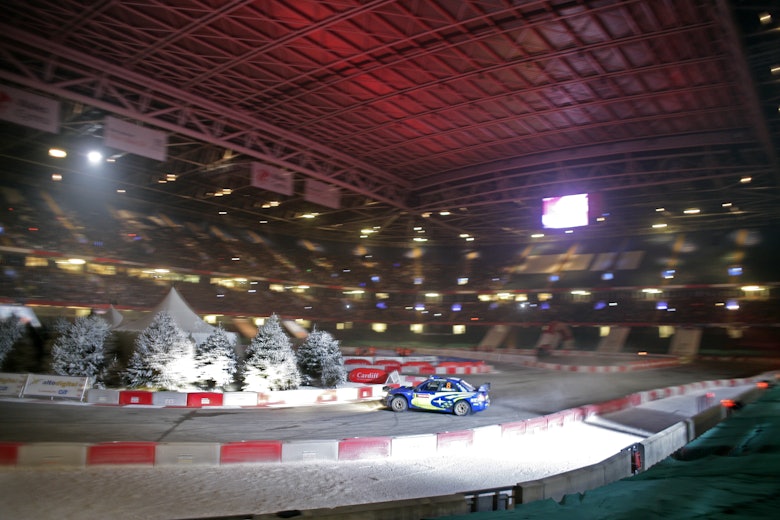
Not to be outdone, in the same year the Acropolis organizer took the WRC into a stadium, the team behind Rally GB fancied a slice of the action too – implementing the very first indoor special stage in WRC history.
Racing through Cardiff’s Millennium Stadium – the home arena for the Welsh rugby team – the ‘Cardiff’ special stage began in the basement of the stadium before jumping onto what is normally the grass pitch via a man-made jump and completing a figure-of-eight route – a spectator-friendly way to conclude Saturday’s leg.
Ironically, the top three were the same as in Athens that same year, but Higgins got the better of Loeb to edge him by a second and Märtin by 1.1s.
The Millennium Stadium remained part of the WRC for the next four years, with Grönholm setting the pace in both 2006 and 2007 for Ford and Loeb coming out on top in 2008.
Estádio Algarve, Portugal
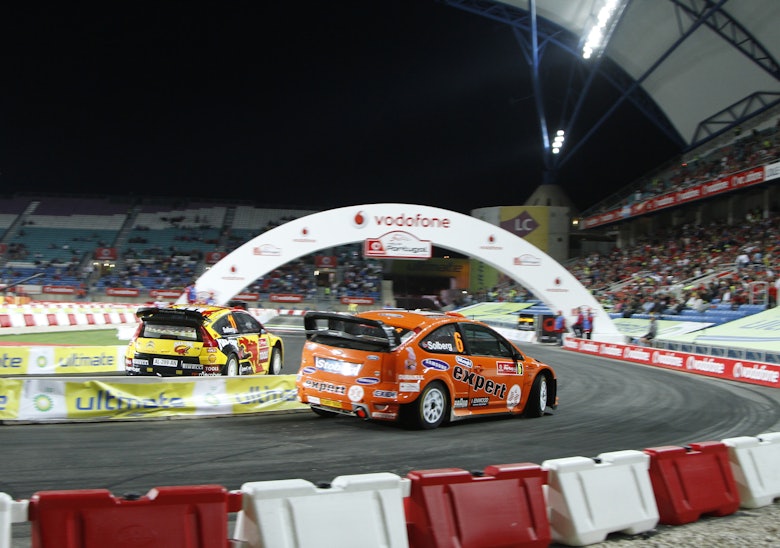
After six years on the sidelines, Rally Portugal came back into the WRC with a bang in 2007 – hosted at Estádio Algarve with a superspecial stage opening and closing the event,
A very similar style of stage to the one in Greece, Grönholm and Loeb took the honors in the stage’s debut year while Henning Solberg owned both runs in 2009 (Rally Portugal wasn’t part of the WRC in 2008 as events rotated).
Mikko Hirvonen denied Federico Villagra a stage win by just a tenth of a second on SS1 in 2010, but Villagra exacted his revenge on SS18 when he won the stadium superspecial by a handy 0.7s on the weekend Sébastien Ogier won his first ever world rally.
Rally Portugal continued to be hosted at Estádio Algarve (built in 2004 for when Portugal hosted the UEFA EURO soccer competition) in 2011 but there would be no stage within the arena.
River Plate Stadium, Argentina
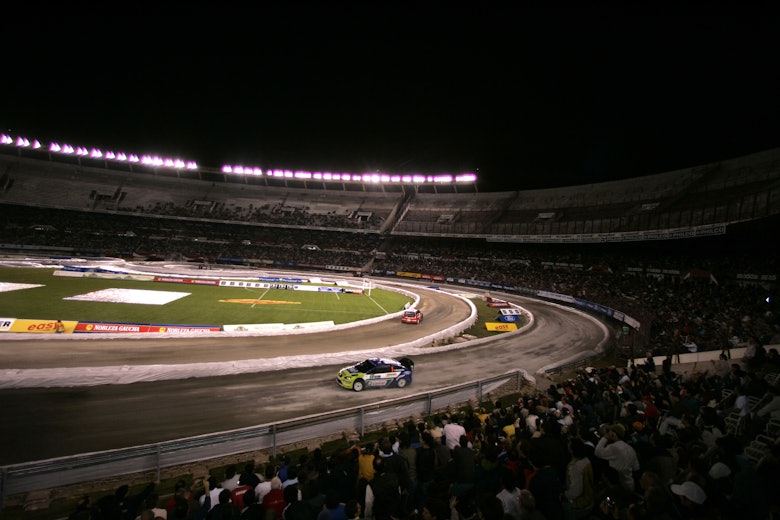
Rally Argentina hasn’t hosted just one stadium superspecial stage in the WRC, but two!
The first was at the famous soccer team River Plate’s home ground in 2007, and uniquely for this list so far, the man-made stage was a loose surface test rather than a concrete or asphalt stage.
Grönholm pipped Ford team-mate Hirvonen by six tenths in front of an electric crowd, but the cheers would be short-lived as the logistical effect of moving the rally over 400 miles from Córdoba to Buenos Aires and back again had a knock-on effect.
Severe overnight storms led to several flight cancellations, and as a result all but one of Friday’s stages actually took place. And it was inside another stadium…
Estadio Córdoba, Argentina
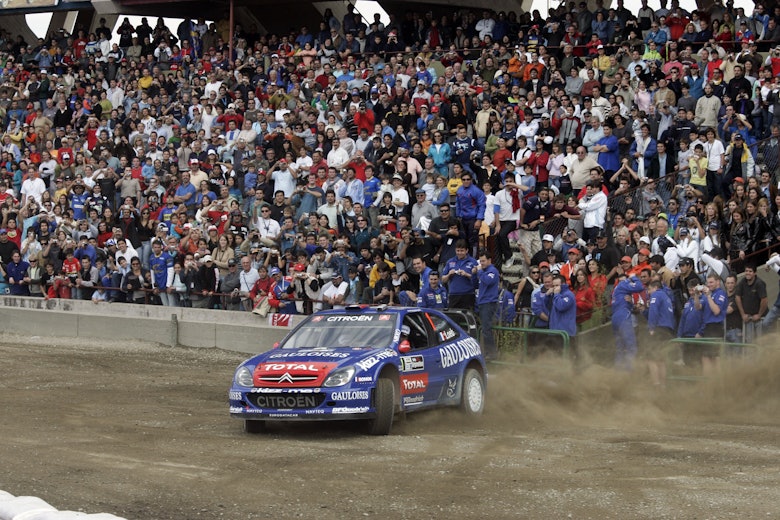
First introduced a year earlier in 2006, Argentina’s second stadium stage may not have been welcomed with open arms in 2007 due to the events that unfolded before it took place, but it at least remained part of the rally’s itinerary for longer than just one year.
Taking place in a general stadium used for soccer, rugby and athletics, this was another gravel stage that featured a crossover jump and tunnel depending on the lane. Running four times across the weekend in ’06, Petter Solberg, Grönholm (twice) and Matthew Wilson all took the honor of a stage win.
Hirvonen was fastest, 1.2s ahead of Jari-Matti Latvala in 2007 on Friday’s only competitive stage while Loeb set the pace the second time around on Sunday.
Estadio Córdoba was ditched for 2008 but returned in ’09 as the first stage on Thursday evening and then the day closer on both Saturday and Sunday. Loeb won SS1 and SS23 while Citroën team-mate Sordo won SS18.
Loeb and Sordo both have a chance to win another stadium superspecial when they start Acropolis Rally Greece seven days from now, now competing for M-Sport Ford and Hyundai respectively.





